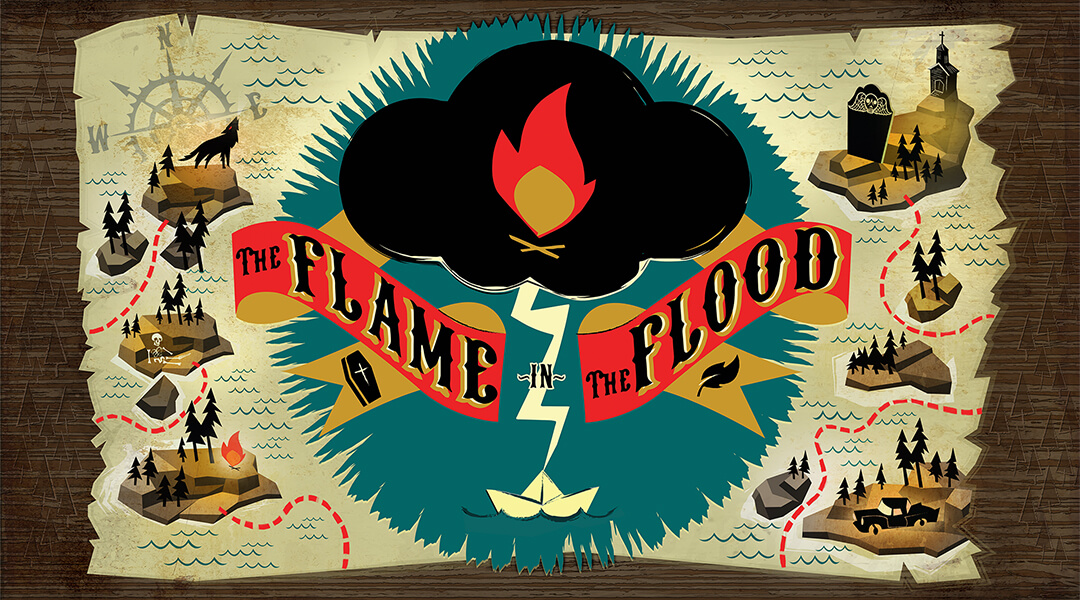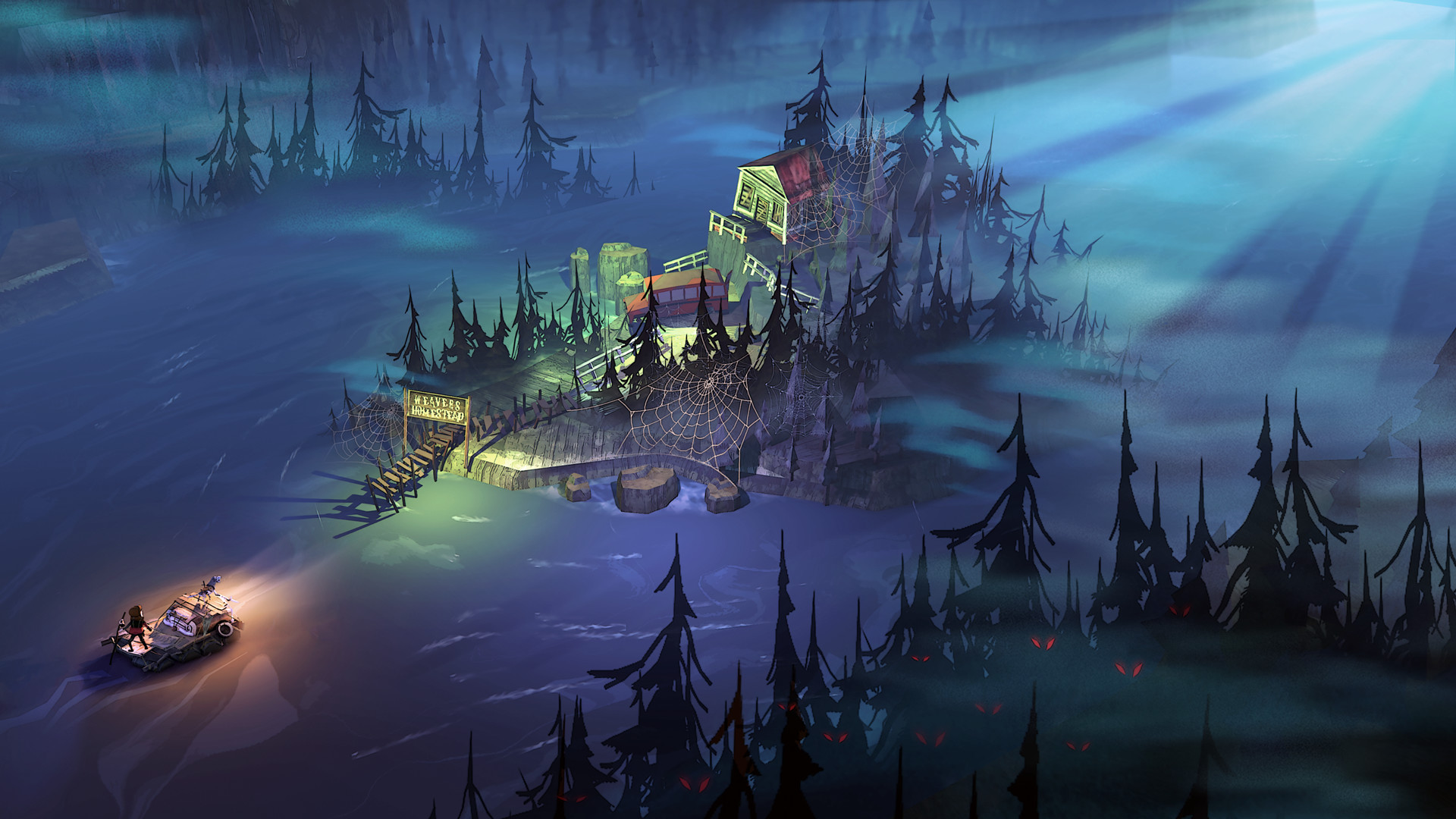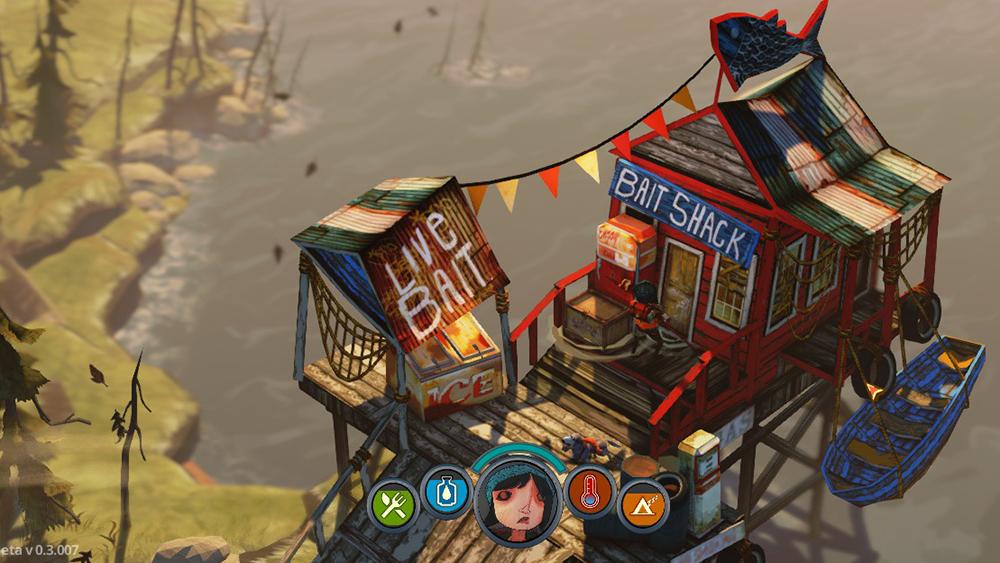THE FLAME IN THE FLOOD Review

There’s been quite the flood of roguelikes and survival simulators releasing the past few years, but none of them have come close to meeting the production values of THE FLAME IN THE FLOOD. The folks over at The Molasses Flood have been working on their flagship title for some time now, and now the game is finally out of early access and available for a wide release.
The game takes us down to good old Dixie, where a great calamity has caused the water level to rise and submerge most of the landscape. The remaining high ground has been taken over by wild animals, and the few survivors left have to brave the elements to scrounge for supplies. You play as Scout, a spry young gal who, with help from her bespectacled canine friend, Aesop, travels down river to follow a radio signal promising refuge. Like most roguelikes, the focus is on the journey rather than the destination, and there is very minimal narrative interference within the adventure.

Not everyone’s got the salt fer nightcrawlin’
THE FLAME IN THE FLOOD’s main conflict is keeping Scout, and her raft, in one piece as she traverses the ten randomly generated regions of the river. This is easier said than done, as Scout has to contend with a host of predators, diseases, and environmental hazards, on top of satisfying her basic needs for food, water, and sleep. Scout can’t fight off animals, and everything from poison ivy, wet clothes, or hidden ant hills can lay her low. If an affliction isn’t immediately cured, it will almost always develop into an even worse problem that is more difficult to remedy. Colds turn into hypothermia, cuts get infected, and so on. The difficulty curve is steep and the journey is unforgiving, more so when you remember that dying means starting from the top. Even compared to genre staples like FTL and DON’T STARVE, THE FLAME IN THE FLOOD presents a daunting challenge.
Of course, there is such a thing as too much challenge, and THE FLAME IN THE FLOOD is guilty of this in some places. The obligatory crafting system is needlessly complicated. For example, a raft upgrade requires schematics, frames, and hardware. Frames and hardware both require wood and screws, as well as different tools to construct each. These tools also require wood and screws to scrap together, meaning you are repeating the same recipe multiple times to yield a single product. Why the extra hoops? Mostly to frustrate you. In addition, the non-rotatable camera will often cause Scout (or the predators stalking her) to end up hidden behind obfuscating features like trees or buildings, a critical error in a game where you have one life.

I remember how Pa would spend all his alone time in the bait shack
While the mechanics have their issues, the presentation is flawless. The BIOSHOCK background of The Molasses Flood is clear with THE FLAME IN THE FLOOD’s surreal visuals. Scout and the other characters look like they crawled out of a Burton film or a nightmare from PSYCHONAUTS, cobbled together with charming grotesqueness. With so many other roguelikes lazily opting for “retro” aesthetics, it’s refreshing to see one actually put effort into its visual department, as this is easily the best looking game of its genre. Along with the endearing yokel dialogue and warm color palette, THE FLAME IN THE FLOOD permeates with a rather soothing tone for a game where everything can kill you. Additional kudos must be given to the score. This is a very musically charged game, with even menu and inventory navigation infused with their own musical cues. The constant progression of country tracks during your one-way trip makes the game feel like it’s going at breakneck speed, whether you’re riding the rapids or not.
After all is said and done, however, the deal-breaker is the length of the average FLAME playthrough. A successful run should run between three and five hours, likely skewing longer given the stops that will have to be made to take shelter from storms or gather food. By the end of that successful run, you’ll have seen just about all the game has to offer, as there isn’t a great amount of diversity in land-based locations to visit. Stops like marinas and bait shacks all have the same layout, and most campsites and churches will start to feel the same by your tenth visit. There is no new game plus, nor are there any unlockable features upon completion. FTL and SPELUNKY’s shorter runs ensured content never got stale, and those games also included new ships and characters for future playthroughs as rewards for good gameplay. THE FLAME IN THE FLOOD lacks this longevity, and unless you’re keen to grind for achievements, there’s little reason to come back after the credits roll.
THE FLAME IN THE FLOOD is an exceptionally well crafted game but was sadly pegged in the wrong genre. Roguelikes are meant to be the perfect games for gamers with tight schedules and limited playtime, requiring low dedication while offering infinite replayability. THE FLAME IN THE FLOOD fails at this key precept of the genre, despite being an otherwise excellently crafted title. Though its flame burns bright, this flood unfortunately lacks the depth needed for it to be sustainable, and that is the only thing holding it back from its true potential.
Verdict: Do Not Recommend
Reviewed on PC, also available on Xbox One



